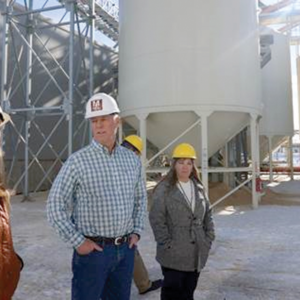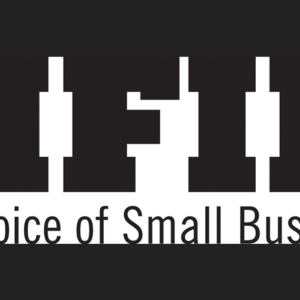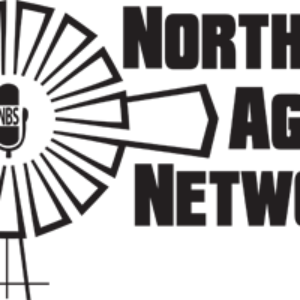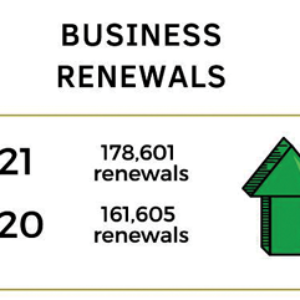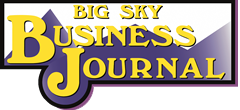How does Billings stack up when compared to other cities in the region? During the recent Economic Outlook Seminar, Allison Corbyn of Big Sky EDA pointed out that with about a $50,000 annual average earnings, Billings surpasses the annual earnings of Bismarck, Casper, Great Falls and Rapid City, while lagging behind Boise, Bozeman, Cheyenne, Fort Collins and Missoula. Total personal income grew by 5.7%. Billings outperformed all major cities in the state in terms of GDP, as well as Casper, Bismarck and Rapid City. Billings GDP (amount of wealth created) was $10.2 billion from 2019 to 2020, a decline of 4.6%, undoubtedly because of COVID. When it comes to overall production Billings vies right at the top exceeded only by Boise and Fort Collins. Between 2019 and 2020 there was a 20.8% increase in the number of people moving into Billings from California. People also moved into the state primarily from Wyoming, Washington, Arizona and Colorado. 88% of the people who moved into Billings moved from other parts of the state. Billings has 82,416 jobs, an increase of 2.5% between Nov. 2019 and Nov.2021. Billings has the lowest unemployment rate in the state at 1.7%. The average home price in Billings is $350,000 which is an increase of over 20% over the past two years. Denver has the highest concentration of Billings’ graduates outside of Billings.
Author: Press Room
Hert Joins Economic Development Group
Southeastern Montana Development Corporation (SEMDC) recently hired additional staffing to assist the regional non-profit economic and community development, group. Amber Hert has joined SEMDC as the new Administrative Services Director and will be based in the Colstrip SEMDC Office. Her primary focus will be managing the day-to-day operations within the Colstrip office and directing the multiple SEMDC Revolving Loan Fund (RLF) Programs.
Jim Atchison, SEMDC Executive Director, noted that “We have been looking for the right person to lead our loan programs for the past 1.5 years.“ “We are very pleased to find Amber, who, with her experience, skills, and credibility, will certainly be an asset to SEMDC and our clients.”
Hert, a Colstrip native, brings over 10 years of financial services experience to the job and most recently managed a regional credit union. Hert will work closely with the SEMDC staff, the regional banking community, and small businesses within the nine-county RLF region. Besides working with loan clients to ensure stability, she will also market and grow the SEMDC RLF programs with the regional banking partners to strengthen collaborative efforts.
“Even with COVID and labor shortages, we have seen a tremendous amount of interest and growth in the regional small business community in the past few years. We know that Hert will take our loan programs to the next level,” added Atchison.
SEMDC is a regional non-profit economic development group established in 1997 to stimulate and encourage economic activity in the four (4) Counties of Custer, Powder River, Rosebud, and Treasure.
Governor Tours Craft Malt
Governor Greg Gianforte and Christy Clark, director of the Montana Department of Agriculture, toured Montana Craft Malt to highlight how the operation promotes Montana’s high-quality ag products and expands value-added ag opportunities for Montana producers.
“As we work to strengthen our state’s number one industry, it’s critical we continue finding ways to help add value to our commodities, capture that premium, and return it to the rightful recipient – Montana producers,” Gov. Gianforte said. “Using locally-sourced ingredients, Montana Craft Malt helps add value to our commodities right here in Montana, while supporting Montana families with good-paying jobs.”
Montana Craft Malt produces 10,000 tonnes of malt annually and adds value to ag supply chains.
Utilizing a state-of-the-art facility spanning more than 50,000 square feet on nine acres, Montana Craft Malt is strategically positioned at the intersection of two interstate highways and a railway spur to ensure the strength of their supply chain from Montana producers to consumers.
“Montana Craft Malt is a shining example of value-added agriculture at work,” said Director Christy Clark. “By processing some of the finest Montana-grown barley into artisan malts that are then used in craft beers and spirits, Montana Craft Malt is bringing grain to glass full circle. I look forward to their continued success.”
The Montana Department of Agriculture is focused on expanding value-added agriculture opportunities in the state. While Montana crops and livestock are already recognized for their superior quality throughout the world, and agriculture remains the backbone of Montana’s economy, the department is working to find innovative ways to add value to these raw commodities, to ensure that Montana can keep pace with a transforming agricultural industry and grow prosperity.
Promoting value-added agriculture to strengthen the ag industry is a signature element of the governor’s Montana Comeback Plan.
Business Inflation Worries Highest since 1981
According to the latest bellwether measurement of the nation’s Main Street economy inflation is rapidly muscling employee- shortages and supply chain disruptions aside, as a top worry of small-business owners.
The Small Business Economic Trends report (aka the Optimism Index), released monthly by the National Federation of Independent Business (NFIB), found 22 percent of small-business owners reporting inflation as their single most important business problem, unchanged from December when it reached the highest level since 1981. The net percent of owners raising average selling prices increased four points to a net 61 percent, the highest reading since the fourth quarter of 1974.
“Our Optimism Index is a national snapshot not broken down by state,” said Ronda Wiggers, Montana state director for NFIB. “While worries of inflation, supply chain disruptions, and in some cases, retail theft, seem evenly spread throughout the nation, states do have some differences and ours now is skewed more toward worker shortages, especially in the restaurant and hospitality industries. As the Economy at a Glance report for December, put out by Montana Department of Labor & Industry, ‘Long-term demographic shifts have reduced growth in the labor supply for over a decade, while short-term disruptions from the pandemic have temporarily reduced hours and availability for some worker groups.’ How we deal with that will be quite a policy accomplishment.”
NFIB Chief Economist Bill Dunkelberg said, “More small business owners started the New Year raising prices in an attempt to pass on higher inventory, supplies, and labor costs. In addition to inflation issues, owners are also raising compensation at record high rates to attract qualified employees to their open positions.”
Key findings include:
* One of the Index components improved, seven declined, and two were unchanged.
* Owners expecting better business conditions over the next six months increased two points to a net negative 33 percent. Small business owners remain pessimistic about future economic conditions as this indicator has declined 13 points over the past six months.
* Forty-seven percent of owners reported job openings that could not be filled, a decrease of two points from December.
* Inventory accumulation plans fell five percentage points.
As reported in NFIB’s monthly jobs report, a net 50 percent reported raising compensation, a 48-year record high reading. A net 27 percent plan to raise compensation in the next three months. Eleven percent of owners cited labor costs as their top business problem and 23 percent said that labor quality was their top business problem.
Owners’ plans to fill open positions remain at record high levels, with a net 26 percent planning to create new jobs in the next three months, down two points from December and just six points below the highest reading in the 48-year history of the survey set in August.
Fifty-eight percent of small business owners reported capital outlays in the last six months, up one point from December. Of those owners making expenditures, 40 percent reported spending on new equipment, 22 percent acquired vehicles, 15 percent improved or expanded facilities, 8 percent acquired new buildings or land for expansion, and 15 percent spent money for new fixtures and furniture.
Seasonally adjusted, 2 percent of all owners reported higher nominal sales in the past three months. The net percent of owners expecting higher real sales volumes decreased by six points to a net negative 3 percent.
The net percent of owners reporting inventory change increased two points to a net 9 percent. Eighteen percent reported increases in stocks while 15 percent reported reductions. Thirty-six percent of owners report that supply chain disruptions have had a significant impact on their business. Only 9 percent report no impact from recent supply chain disruptions.
The net percent of owners raising average selling prices increased four points to a net 61 percent, the highest reading since the fourth quarter of 1974. Price raising activity over the past 12 months has continued to escalate, reaching levels not seen since the early 1980s.
Five percent of owners reported lower average selling prices and 62 percent reported higher average prices.
The frequency of reports of positive profit trends decreased three points to a net negative 17 percent.
Three percent of owners reported that all their borrowing needs were not satisfied. Twenty-five percent reported all credit needs met and 62 percent said they were not interested in a loan.
The NFIB Research Center has collected Small Business Economic Trends data with quarterly surveys since the 4th quarter of 1973 and monthly surveys since 1986. Survey respondents are randomly drawn from NFIB’s membership, who actually own a business.
Ag Hoping for Better Year
By Brad Cook, WIPFLI Agribusiness Practice Leader
From the Northern Ag Network
In 2021, agricultural producers took a double whammy: pandemic-related relief programs dried up, and about half of the contiguous U.S. experienced moderate to extreme drought. A lack of government relief programs in 2021 (compared to 2020), created uncertainty for growers and food processors.
Government programs, crop insurance and indemnity payments will help companies get through the year – but they’re not life-saving measures, and won’t provide big enough boosts for farmers to invest in technologies or processes that could make them more resilient to future challenges.
Labor is a common concern for the industry; it’s difficult to get enough workers every season. But this year, limitations on international travel intensified the issue, as did uncertainty surrounding immigration policy. A severe shortage of workers also drove wages.
Because of supply chain issues, pricing and availability are in flux for everything from feed to chemical treatments and machinery. Energy prices are also up, and inflation is squeezing margins. Agriculture companies are paying more for everything they need – which will eventually trickle down to the price tags in grocery stores.
So, what can agriculture companies do to stay afloat – or even get ahead?
Obviously, they can’t control the weather. But they can manage aspects of their business to help build resiliency. As we enter 2022, here are eight issues agriculture businesses should pay attention to:
—Consumer preferences
Some food fads, like organic and gluten-free are likely to stick around for the long haul. Growers and producers who ignore trends – or buyer preferences in general – may be disadvantaged down the road. As shopping behavior shifts locally, farmers and producers need a better sense of what consumers want.
—“Smart” food production
Blood, sweat and tears can’t solve all of today’s food production issues. Every farm and production company will need technology to produce food more efficiently, stay competitive and connect with potential buyers. For some farms, the first step is moving to a cloud-based system to manage financial information. Others can use farm information systems to accumulate data in the field, automate processes and decisions, or meet growing demands for food traceability and origin labeling.
—Adopting a business mindset
New tools can help producers understand their costs better, which leads to better decisions when they’re marketing and selling products. With more insight into the whole production cycle, producers can predict yields more accurately and see how different decisions affect their margins. Information allows growers and producers to look beyond the current growing season and create long-term, strategic plans for the business. If agriculture companies focus more time and money on planning now, they can build more stable and sustainable businesses overall.
—Cybersecurity
Farmers and producers are a big target in the cybersecurity “food chain.” In addition to keeping the world’s food safe from weather, insects and predatory animals, the industry now has to protect against cybercriminals. Agriculture companies have to employ data to overcome labor challenges and produce food more efficiently – but they have to protect their information systems, data and technology, too, which will require new partnerships and skills.
—Barriers to entry
Most farmers are nearing retirement age. Once they hang up their hats, they’ll leave an enormous talent gap in the career field. Land that’s needed to start farming is too expensive for most families or professionals. And it’s a demanding career. Family-run companies in particular need to create long-term and succession plans for the business to ensure continuity. The industry needs more programs and incentives to recruit younger generations. In the meantime, agriculture companies may need to diversify or try different business models to attract younger generations.
—Regulation, policy and advocacy
Agriculture and natural resource companies rely on the environment and bring an important perspective to conversations about climate, water usage, protected species – and other matters that are being decided on, sometimes without their input. Growers and producers need to advocate for the industry and become more involved at the local and national levels. Local farm bureaus and state programs can teach agriculture companies how to get involved, advocate for and influence policy. Staying on the sidelines is a huge potential risk for natural resource professionals. A number of proposed changes could affect agricultural operations and timing related to potential transfers of ownership. Many farmers don’t contemplate retirement as other professionals do, but they should be considering it or at the very least, how they will transfer ownership to the next generation or maximize value for a potential sale.
—Innovation
Farming may be an age-old profession, but that doesn’t mean it’s protected from change. Farmers and producers should pay attention to new farming and sustainability practices that could create alternative sources of income. From hemp to carbon offsets, hydroponics and aeroponics, there’s no telling what will take off. We do know the world’s population is increasing, and we need innovative ways to address food needs. Farmers and producers can influence how the world navigates potential food insecurities and eliminates food waste.
——-
Brad Cook is a partner at WIPFLI with experience in tax planning, tax compliance, and transition planning for family businesses primarily in the agriculture industry. He also serves as leader of the firm’s agriculture industry practice.
Warmer Named to CBC Board
George Warmer, CCIM, managing broker of Coldwell Banker Commercial CBS, Billings, has been named to the 2022-2024 Coldwell Banker Commercial Advisory Board. The board is comprised of a select group of CBC affiliate owners nationwide and was created to provide a forum for the exchange of ideas between CBC franchisees and the brand’s corporate leadership.
The CBC Advisory Board has proved to be a successful means of driving innovation and gaining critical insight into the evolving needs of overall CBC strategies. Each member of the Advisory Board serves as a liaison for their respective region, providing updates on the latest developments, policies, and services, as well as reporting and proposing actions to resolve any issues.
Tax Cuts & Job Act Increased Revenues, Reduced Taxes Across Board
According to the Tax Foundation, the latest IRS income tax data shows reported income and taxes paid increased in tax year 2019, the second year of the Tax Cuts and Jobs Act and the last year before the onset of the COVID-19 pandemic.
The data demonstrates the U.S. individual income tax continues to be progressive, borne primarily by the highest income earners:
* In 2019, taxpayers filed 148.3 million tax returns, reported earning nearly $11.9 trillion in adjusted gross income, and paid $1.6 trillion in individual income taxes.
* The top 1 percent of taxpayers paid a 25.6 percent average individual income tax rate, which is more than seven times higher than taxpayers in the bottom 50 percent (3.5 percent).
* The share of reported income earned by the top 1 percent of taxpayers fell to 20.1 percent from 20.9 percent in 2018. The top 1 percent’s share of federal individual income taxes paid fell to 38.8 percent from 40.1 percent.
* The top 50 percent of all taxpayers paid 97 percent of all individual income taxes, while the bottom 50 percent paid the remaining 3 percent.
* The top 1 percent paid a greater share of individual income taxes (38.8 percent) than the bottom 90 percent combined (29.2 percent).
* The Tax Cuts and Jobs Act reduced average tax rates across income groups.
Republicans Now Hold Most Trifectas
When Virginia’s legislators and Governor-elect Glenn Youngkin (R) were sworn into office on Jan. 12, the political dynamics of the country shifted even more to the right.
Now, 33.9 percent of Americans (112 million) live in a state with a Democratic trifecta, 41.8 percent (137 million) live in a state with a Republican trifecta, and 24.3 percent (78 million) live in a state with divided government.
A state government trifecta is a term to describe single-party government, when one political party holds the governorship and majorities in both chambers of the state legislature. At the start of 2022, there were 38 trifectas—15 Democratic and 23 Republican.
Record Business Creation in Montana
Governor Greg Gianforte and Secretary of State Christi Jacobsen announced that a record number of new businesses were created in Montana last year. More than 51,500 new businesses were registered with the Montana Secretary of State in 2021, surpassing the previous record set in 2020 by more than 12,000 businesses.
In Yellowstone County there were 838 new businesses registered in 2021.
“Montana is open for business. In the last twelve months, we’ve seen a record low unemployment rate, a record number of Montanans working, and a record number of new businesses created in the state,” Gov. Gianforte said. “We’ll continue to foster a climate where businesses can thrive and create sustainable jobs and greater prosperity for more Montanans.”
“A key indicator for economic strength in Montana is the continued growth of new businesses,” said Montana Secretary of State Christi Jacobsen, “and the number of new businesses in Montana just continues to grow. Montana has been rated as one of the best states in the nation for business startups, including The Blueprint ranking Montana No. 1 in its Top 10 Best States to Start Your Small Business in 2021 report.”
The Secretary of State’s new Montana Business Economic Report revealed 51,508 new businesses registered in 2021, surpassing the 2020 total by more than 12,000. Nearly 30,000 Domestic Limited Liability Companies (LLCs) were registered in 2021.
Montana Chamber of Commerce President and CEO Todd O’Hair celebrated the news.
“The record growth in business registrations clearly points to a strong Montana economy and a vibrant entrepreneurial base. You can feel the optimism growing for Montana’s future in every business sector,”?O’Hair said.
Through the Secretary of State’s modern, user-friendly Montana Business Economic Report, valuable data is provided about the health of the business economy in Montana. Per the report, March had the largest number of business registrations in 2021, with 5,161 new businesses registering with the Secretary of State’s Office.
In addition to new business registrations, business renewals and businesses in good standing in 2021.
The Montana Business Economic Report contains information about where, by zip code, new businesses are located. The 59901 zip code (Flathead County) had the highest increase in 2021, with more than 7,000 new businesses registered.
There were also 178,601 renewal filings in 2021 and 267,900 businesses in good standing, both increases over the prior year.
The Montana Business Economic Report can be found on the Secretary of State’s website.
Poll:Most Americans Expect Inflation to Rise
The majority of Americans think the rise in inflation last year will only get worse in 2022, according to a new poll.
Gallup released polling data showing that 79% of surveyed Americans “predict inflation will go up,” with 50% saying it will go up “a lot.” Those are the most pessimistic numbers on inflation ever recorded by Gallup, the pollster said.
Americans are split on economic growth, though, with 40% saying it will increase and 39% saying it will decrease.
“In the past, Americans have always been more likely to say inflation will increase rather than decrease, but the current expectation is higher than usual – in fact, it is the highest Gallup has measured in its trend,” Gallup said. “The prior high was 76% in September 2005. In recent years, from 2007 through 2020, roughly six in 10 Americans have expected inflation to increase.”

